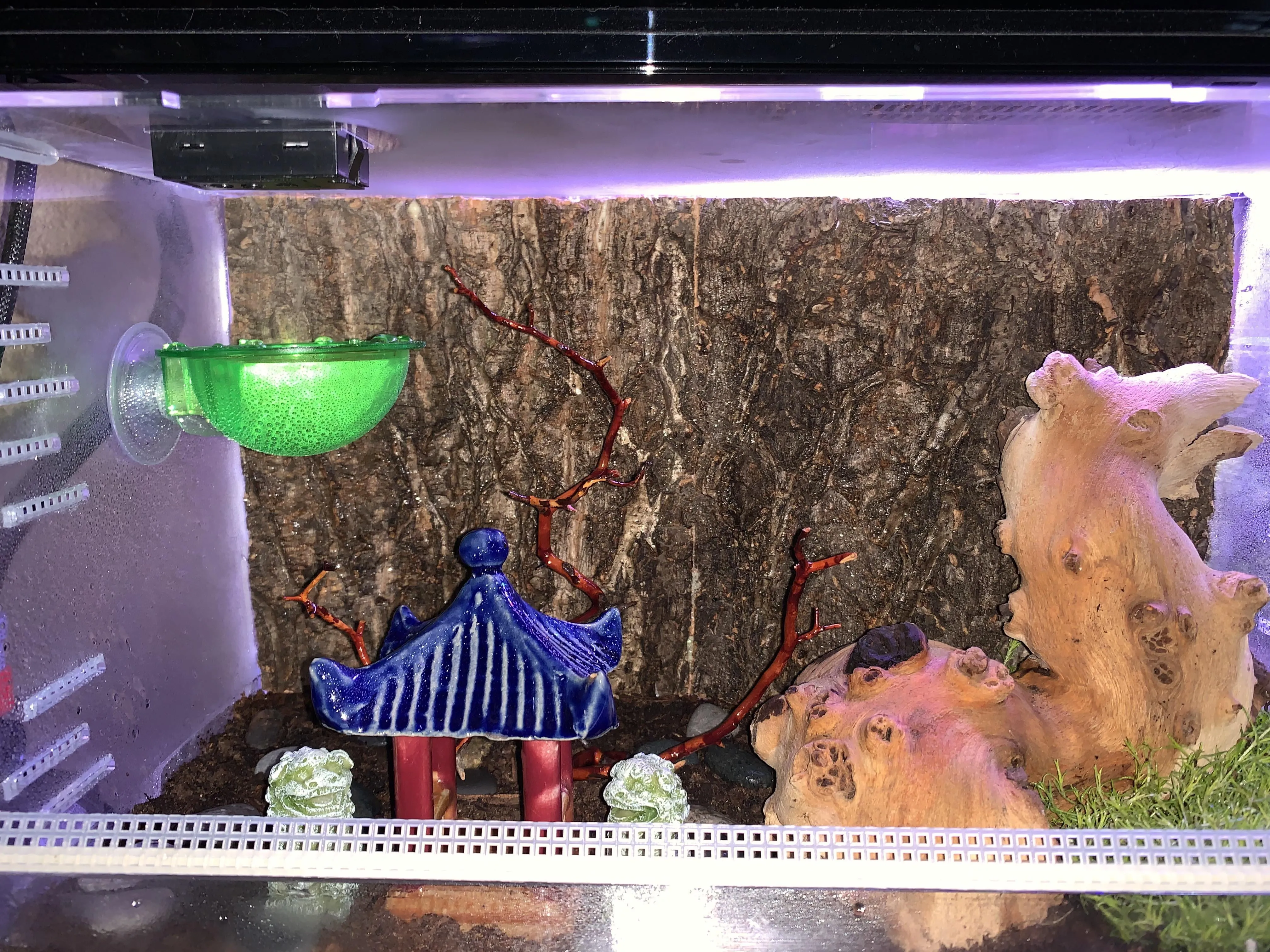Understanding Pink Toe Tarantula Habitat Needs
Pink toe tarantulas (Avicularia avicularia) are arboreal creatures, meaning they are naturally adapted to living in trees. This fundamental understanding is crucial for creating an appropriate enclosure. Their habitat needs are significantly different from terrestrial tarantulas. They require a vertically oriented enclosure with ample space for climbing and webbing. The enclosure size must accommodate their arboreal lifestyle, allowing them to move freely, establish a comfortable living space, and exhibit their natural behaviors. Creating an environment that mimics their natural habitat is critical to their health and well-being, ensuring they thrive in captivity. Neglecting these needs can lead to stress, poor health, and a shortened lifespan for your pink toe tarantula.
Ideal Enclosure Size for Pink Toe Tarantulas
The ideal enclosure size for a pink toe tarantula depends primarily on its size and age. Generally, a good starting point for an adult pink toe tarantula is an enclosure that measures approximately 12x12x18 inches (length x width x height) or larger. The height is particularly important because these tarantulas are climbers. This provides enough vertical space for them to create their web retreats. While larger is generally better, an enclosure that is too large can make it difficult for the tarantula to find its food. Therefore, the enclosure should be appropriately sized for the tarantula’s size, with provisions for growth. This helps to ensure their comfort and allow them to feel secure, while also maintaining an environment that is easily managed for temperature and humidity.
Factors Affecting Enclosure Size
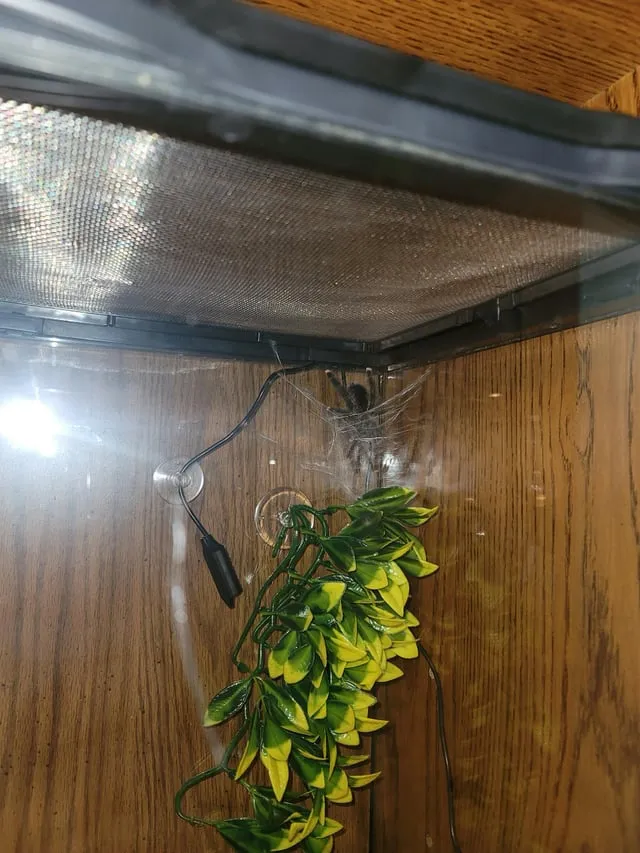
Several factors influence the enclosure size requirements for pink toe tarantulas. The primary consideration is the tarantula’s size and stage of growth. A juvenile tarantula will require a smaller enclosure compared to an adult. Other factors include the type of enclosure, as some designs offer more usable space than others. The amount of décor also plays a role; too much décor in a small enclosure can restrict the tarantula’s movement. Additionally, the specific needs of your tarantula, such as its feeding habits and overall activity level, can influence the ideal enclosure size. Considering all these elements ensures that the chosen enclosure provides a comfortable and stimulating environment, promoting the overall health and happiness of your pet tarantula. A well-considered enclosure enhances the pet’s well-being and makes it easier for owners to care for them.
Tarantula’s Size and Growth Stage
The size and growth stage of your pink toe tarantula are the most critical factors in determining the appropriate enclosure size. Spiderlings (newly hatched tarantulas) and juveniles require smaller enclosures to feel secure and to facilitate finding food. As the tarantula grows, the enclosure size must be increased accordingly. The enclosure should be upgraded as the tarantula molts and grows larger. Providing an appropriately sized enclosure at each stage ensures the tarantula doesn’t feel overwhelmed and has enough space to move, hunt, and build its web. Careful monitoring of the tarantula’s size, coupled with regular enclosure upgrades, is crucial for providing optimal conditions. This is an essential part of responsible tarantula care, contributing to its overall health and longevity.
Adult Pink Toe Tarantula Enclosure
Adult pink toe tarantulas, due to their larger size and specific needs, demand more spacious enclosures. As previously stated, a good starting point for an adult is an enclosure with dimensions around 12x12x18 inches or larger, ideally with more height than width or length. The height is particularly important to cater to their arboreal nature, allowing them to climb and establish their web. The enclosure should have ample room for climbing, webbing, and a suitable hiding place. A larger enclosure provides the tarantula with more room to explore and feel secure. It also helps in maintaining the necessary temperature and humidity levels. A well-designed adult enclosure mimics their natural habitat, contributing to their physical and psychological well-being, making them more active and vibrant.
Juvenile Pink Toe Tarantula Enclosure
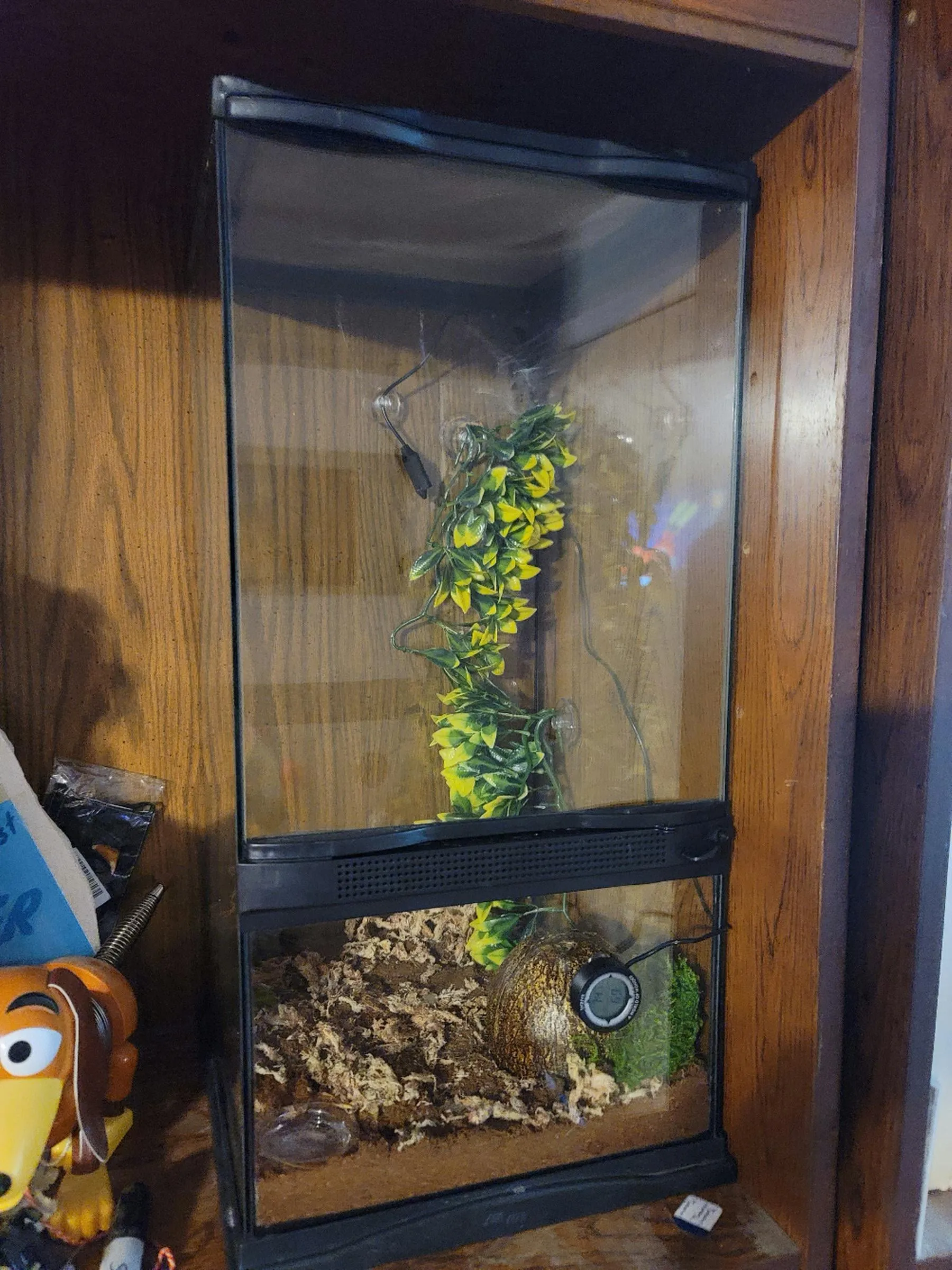
Juvenile pink toe tarantulas require smaller enclosures for safety and ease of feeding. A suitable enclosure size for a juvenile might be a container that is 4x4x8 inches or slightly larger. The enclosure should provide enough space for the tarantula to move around, create a web, and hunt. Overly large enclosures can make it difficult for juveniles to find food, leading to stress. The juvenile enclosure should include appropriate ventilation and a small water dish. As the juvenile grows, the enclosure should be upgraded to prevent overcrowding and provide adequate space for the growing tarantula. Careful monitoring of the juvenile’s growth and behavior will help determine the appropriate time for an enclosure upgrade, thereby supporting its healthy development.
Choosing the Right Enclosure Type
Selecting the correct enclosure type is crucial for providing a suitable habitat for your pink toe tarantula. Several materials and designs are available, each with its advantages and disadvantages. The ideal enclosure should be well-ventilated, secure, and easy to maintain. The enclosure’s material and design must accommodate the tarantula’s arboreal lifestyle. It should also provide easy access for feeding, watering, and general maintenance. Considering factors such as humidity control, visibility, and overall aesthetics will help ensure that the chosen enclosure meets both the needs of the tarantula and the preferences of the keeper. The proper enclosure type is vital for the overall health and happiness of your pink toe tarantula, as well as for creating an environment that is easy to manage and enjoy.
Glass Enclosures
Glass enclosures are a popular choice for pink toe tarantulas due to their transparency, which allows for excellent visibility. They offer a clear view of the tarantula and its habitat. Glass enclosures are easy to clean and maintain, and they generally provide good temperature control. However, it’s important to ensure adequate ventilation, as glass can trap moisture. They can also be heavier and more fragile than other enclosure options. When selecting a glass enclosure, ensure it has a secure lid to prevent escapes and the correct dimensions for your tarantula’s size. Despite these considerations, their aesthetic appeal and ease of cleaning make glass enclosures a favored choice among many tarantula keepers. With proper setup, glass enclosures can provide a safe and visually appealing habitat for your pink toe tarantula.
Acrylic Enclosures
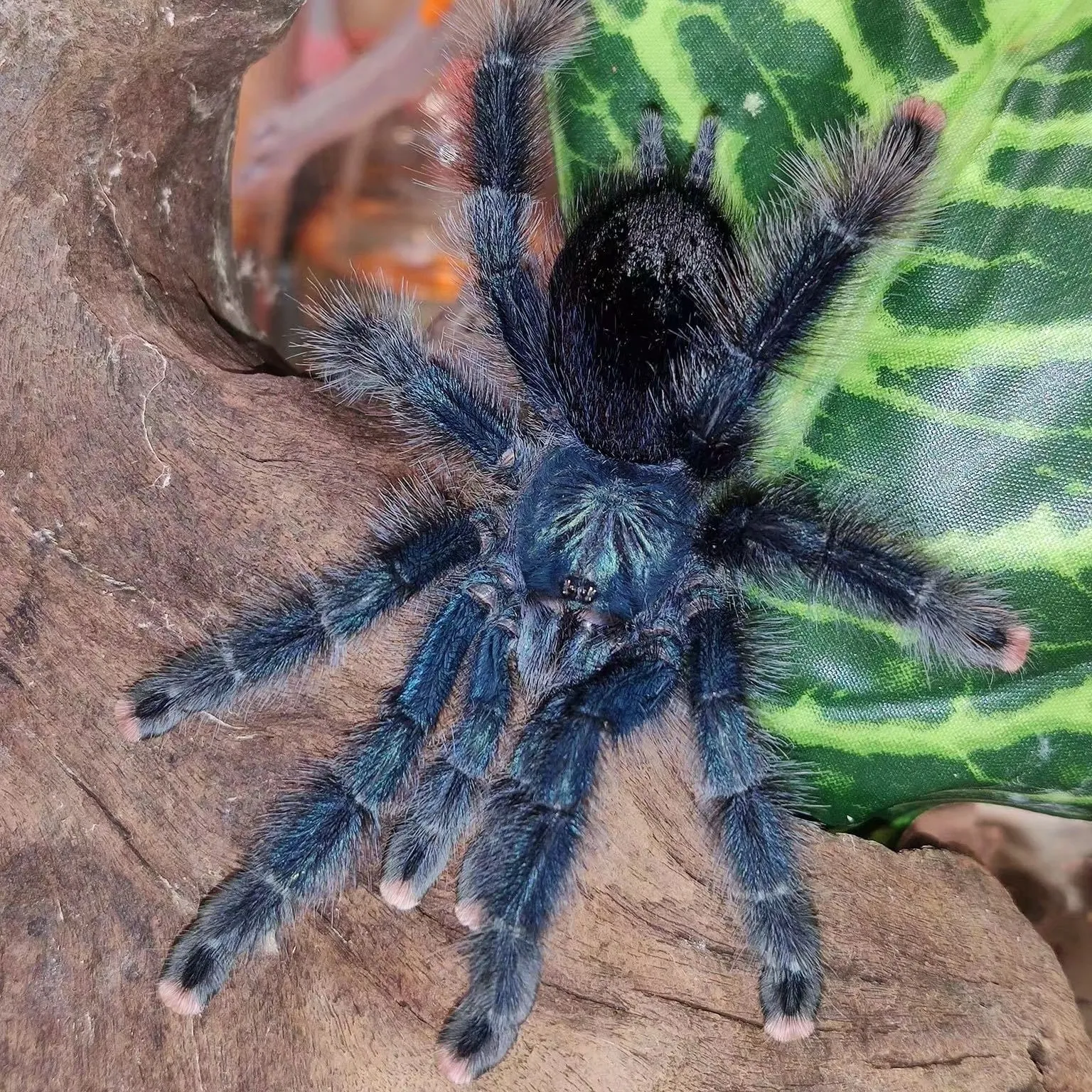
Acrylic enclosures are another excellent option for pink toe tarantulas. Acrylic is a lightweight and durable material that offers excellent visibility, similar to glass. It is also less prone to breakage than glass, making it a safer choice. Acrylic enclosures often come with pre-drilled ventilation holes and can provide good insulation, which can help maintain temperature and humidity levels. Acrylic is also easier to modify and customize, allowing for various setups and designs. However, acrylic can scratch more easily than glass, which might affect its clarity over time. The cost of acrylic enclosures can also be higher. However, the benefits of durability, visibility, and ease of maintenance make them a practical and attractive option for housing pink toe tarantulas.
Mesh Enclosures
Mesh enclosures are sometimes used, especially for adult pink toe tarantulas, because they provide excellent ventilation, which is crucial for preventing mold and maintaining appropriate humidity levels. The mesh design allows for superior airflow, creating a healthier environment. They are generally lightweight. However, mesh enclosures may not retain humidity as well as glass or acrylic enclosures, requiring more frequent misting and monitoring of humidity levels. The mesh can also pose a potential hazard if the tarantula’s claws get caught. Choosing a mesh enclosure requires careful consideration of the mesh material and size, ensuring that it is fine enough to prevent escapes while still providing adequate ventilation. Mesh enclosures are best for experienced keepers who can manage humidity and other environmental factors effectively.
Essential Enclosure Features
Regardless of the enclosure type, several features are essential for creating a suitable habitat for your pink toe tarantula. These features include proper substrate and ventilation, temperature and humidity control, and appropriate décor to mimic the tarantula’s natural environment. These elements work together to create a comfortable and stimulating living space that supports the tarantula’s health and well-being. Providing these essential features demonstrates a responsible approach to tarantula care, contributing to the pet’s longevity and overall quality of life. Careful attention to these details will create a thriving environment, making your pink toe tarantula feel secure and at home.
Substrate and Ventilation
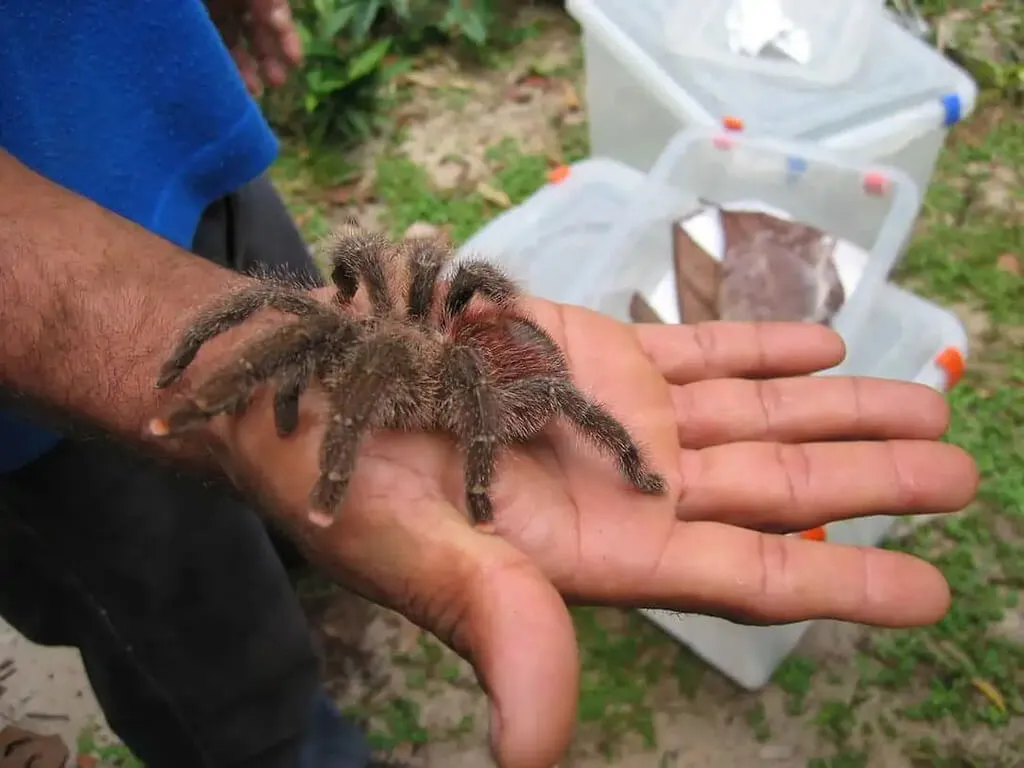
The substrate and ventilation are two of the most critical aspects of the enclosure setup. The substrate, which is the material covering the bottom of the enclosure, should be suitable for the tarantula’s arboreal lifestyle. A substrate like coconut fiber or a mix of peat moss and vermiculite works well because it retains moisture and helps maintain humidity levels. Adequate ventilation is equally important to prevent the buildup of mold and bacteria. This can be achieved through strategically placed ventilation holes in the enclosure. A balance between humidity and ventilation is crucial; too much humidity without proper ventilation can lead to health problems. Proper substrate and ventilation work together to create a healthy and safe environment, vital for the tarantula’s respiratory health and overall well-being. The proper balance contributes significantly to the longevity of your pink toe tarantula.
Temperature and Humidity Control
Maintaining the correct temperature and humidity levels is crucial for the health of your pink toe tarantula. Pink toes thrive in a temperature range of 75-85°F (24-29°C). A thermometer is essential for monitoring the temperature within the enclosure. Humidity levels should be kept at approximately 70-80%. A hygrometer is needed to measure humidity. Regular misting of the enclosure, especially the substrate and any decorations, helps maintain the desired humidity levels. Proper ventilation and the right substrate also play vital roles in controlling humidity. The ideal setup involves a combination of these elements. Consistent monitoring and adjustments are essential to ensure the tarantula is in optimal conditions, which supports its health and promotes molting and overall well-being.
Decorating the Enclosure
Decorating the enclosure not only adds visual appeal but also provides essential environmental enrichment for your pink toe tarantula. The décor should replicate the tarantula’s natural habitat, encouraging natural behaviors and reducing stress. This can include providing hiding places, climbing structures, and plants. The chosen decorations should be non-toxic and safe for the tarantula. The goal is to create a secure and stimulating environment that allows the tarantula to exhibit its natural behaviors, such as climbing, webbing, and hiding. A well-decorated enclosure contributes significantly to the tarantula’s psychological well-being and enhances the enjoyment of having a pink toe tarantula as a pet. Proper decoration helps to ensure the tarantula thrives in its enclosure.
Hiding Places and Climbing Structures
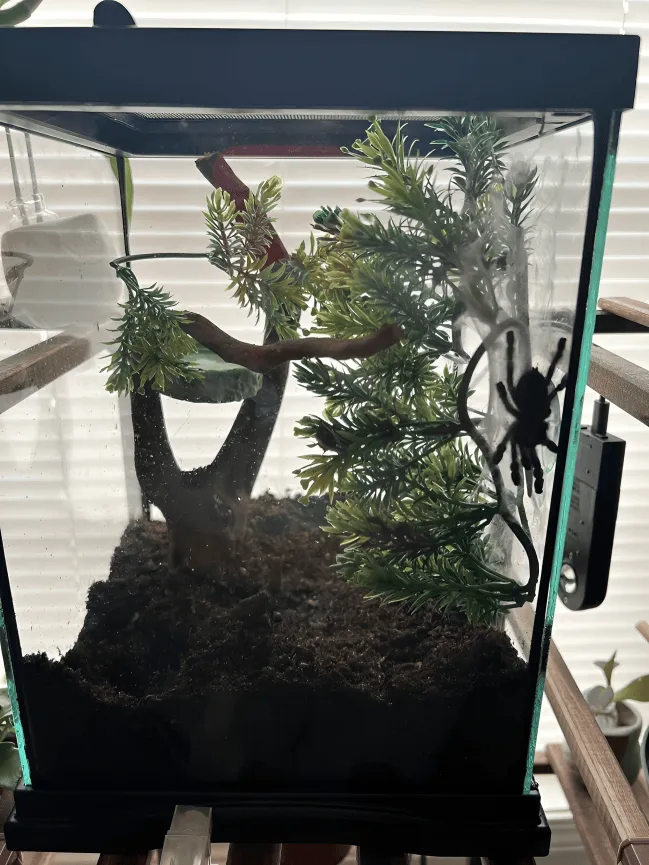
Providing hiding places and climbing structures is essential for creating a comfortable environment for your pink toe tarantula. Cork bark, artificial or live plants, and hollow logs make excellent hiding places. They offer the tarantula a safe space to retreat, especially during molting or when feeling threatened. Climbing structures, such as branches and driftwood, are essential for arboreal species like pink toes, providing them with the means to climb and move around the enclosure. These structures should be securely placed to prevent them from falling and potentially injuring the tarantula. The combination of hiding places and climbing structures replicates their natural habitat and creates an engaging and secure environment. This setup supports the tarantula’s physical and psychological well-being.
Plants and Foliage
Including plants and foliage in the enclosure can significantly enhance the habitat for your pink toe tarantula. Live plants not only add to the aesthetic appeal but also help maintain humidity levels and provide additional hiding places. Choose non-toxic plants like pothos or other tropical species that thrive in humid environments. Artificial plants can also be used and are easier to maintain. Foliage provides a naturalistic environment. It also provides a place for the tarantula to create webs. Proper selection and placement of plants and foliage contribute to a healthier and more enriching environment. This setup enhances the tarantula’s well-being. It also makes the enclosure more visually appealing, benefiting both the tarantula and the keeper.
Feeding and Watering
Providing food and water is critical for the health and well-being of your pink toe tarantula. The enclosure setup should accommodate feeding and watering. This makes the process easy and ensures the tarantula has access to both resources. The tarantula should be fed a varied diet of appropriately sized insects, such as crickets, roaches, or mealworms. A small, shallow water dish should be provided, ensuring the tarantula always has access to fresh water. These elements are crucial for maintaining your tarantula’s health. Feeding and watering, when done correctly, are essential components of responsible tarantula care, promoting the tarantula’s well-being and ensuring it has a long and healthy life.
Maintaining the Enclosure
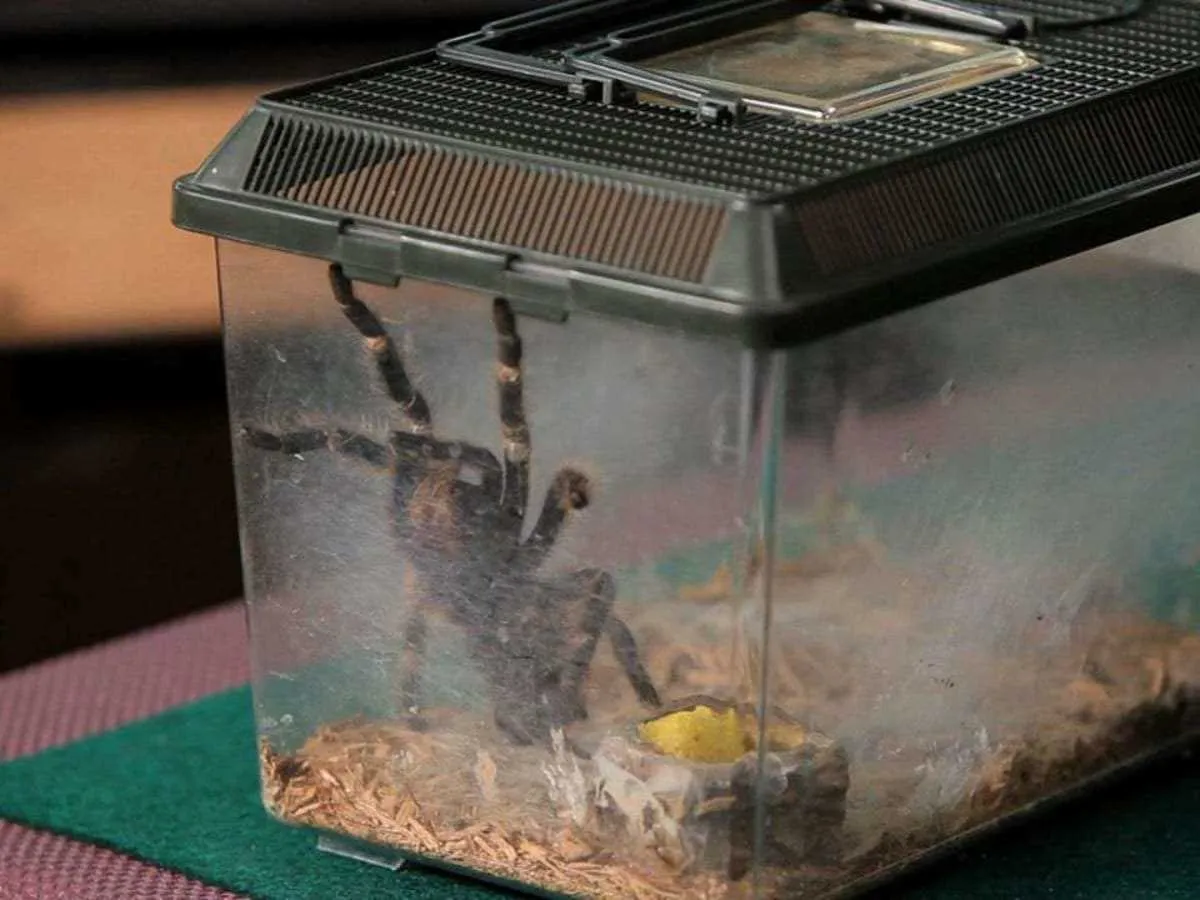
Regular maintenance is key to ensuring the long-term health and happiness of your pink toe tarantula. This involves routine cleaning, monitoring environmental conditions, and making necessary adjustments. A well-maintained enclosure provides a healthy and safe living space for your tarantula, minimizing the risk of disease and promoting overall well-being. The process includes several key aspects, which, when followed consistently, will contribute to the long and healthy life of your pet. Careful and consistent upkeep ensures a stable and enriching environment for your pink toe tarantula. By prioritizing these maintenance tasks, you create a thriving habitat, which will significantly enhance the quality of life for your pet.
Cleaning and Maintenance
Regular cleaning and maintenance are essential for keeping the enclosure clean and hygienic. This process involves removing uneaten food, fecal matter, and any dead insects. Spot cleaning should be performed as needed, ideally several times per week. Replace the substrate periodically, typically every few months, depending on the type of substrate and the enclosure’s size. Ensure you are wiping down the enclosure walls and decorations to prevent the buildup of mold. Also, make sure to check the water dish and clean it regularly to prevent contamination. Consistent cleaning minimizes the risk of disease. It supports the overall health and well-being of the pink toe tarantula. Adhering to a regular cleaning schedule will keep the enclosure in prime condition, which will ultimately benefit your pet.
Common Mistakes to Avoid
Avoiding common mistakes is crucial for providing a safe and healthy environment for your pink toe tarantula. These errors can lead to stress, illness, and potentially a shortened lifespan. This includes improper enclosure sizing, inadequate ventilation, and poor environmental control. By being aware of and avoiding these pitfalls, you can significantly improve your tarantula’s quality of life and ensure its well-being. Educating yourself and staying informed about the best practices of tarantula care is the key to being a responsible and successful pink toe tarantula owner. Avoiding common mistakes is vital for ensuring your pet thrives.
Overcrowding and Under-sizing
One of the most common mistakes is overcrowding or using an enclosure that is too small for the tarantula’s size. Overcrowding can lead to stress, competition for resources, and difficulty in thermoregulation. An undersized enclosure limits the tarantula’s movement. It also restricts its ability to create a comfortable web and find food. Always provide an appropriately sized enclosure from the start, and upgrade the enclosure as the tarantula grows. This prevents potential issues and supports the tarantula’s well-being. Properly sizing the enclosure is critical for ensuring your tarantula thrives. Regularly reassessing the size requirements as the tarantula develops is a crucial aspect of their care, which will promote their health and longevity.
Inadequate Ventilation
Insufficient ventilation is another common mistake, which can lead to the buildup of moisture and the development of mold. This can create a harmful environment, which can cause respiratory problems in your tarantula. Proper ventilation is essential for maintaining humidity and removing stale air. This can be achieved by using enclosures with well-placed ventilation holes. Regularly monitoring the enclosure for condensation, which can indicate inadequate airflow, is essential. Ensuring proper ventilation contributes to the overall health and longevity of your pink toe tarantula. A well-ventilated enclosure is crucial for preventing health issues and supporting their well-being.
Conclusion
Providing the right enclosure size is essential for the health and well-being of your pink toe tarantula. By understanding their arboreal nature and habitat needs, and by choosing the right enclosure type and features, you can create a thriving environment for your pet. Remember to monitor the tarantula’s size and growth stage, and adjust the enclosure size accordingly. Avoid common mistakes such as overcrowding and inadequate ventilation, and always prioritize the tarantula’s welfare. The goal is to give your pink toe tarantula a long, healthy, and fulfilling life. A well-cared-for pink toe tarantula can be a rewarding pet. With the correct enclosure, you can give your pet a comfortable home.
